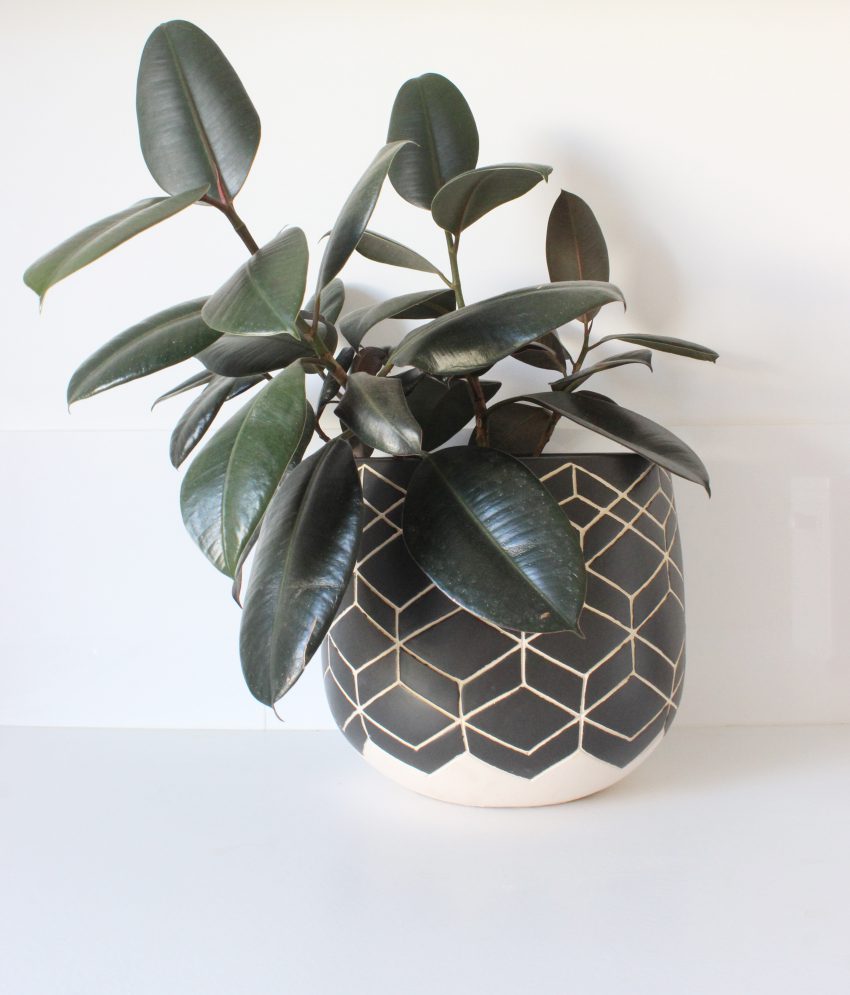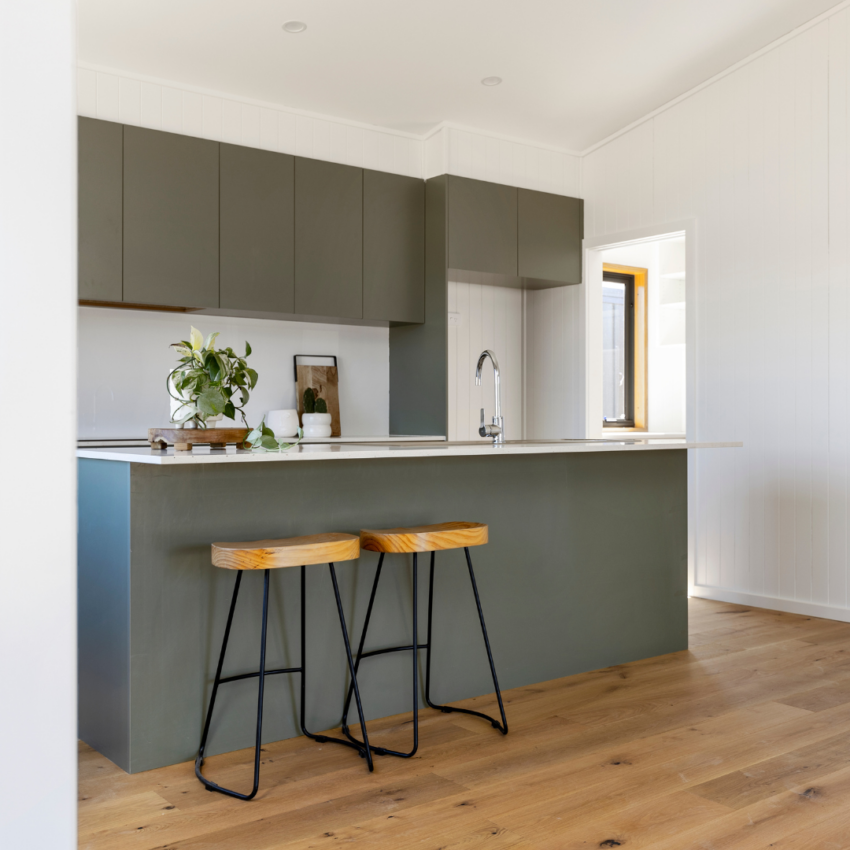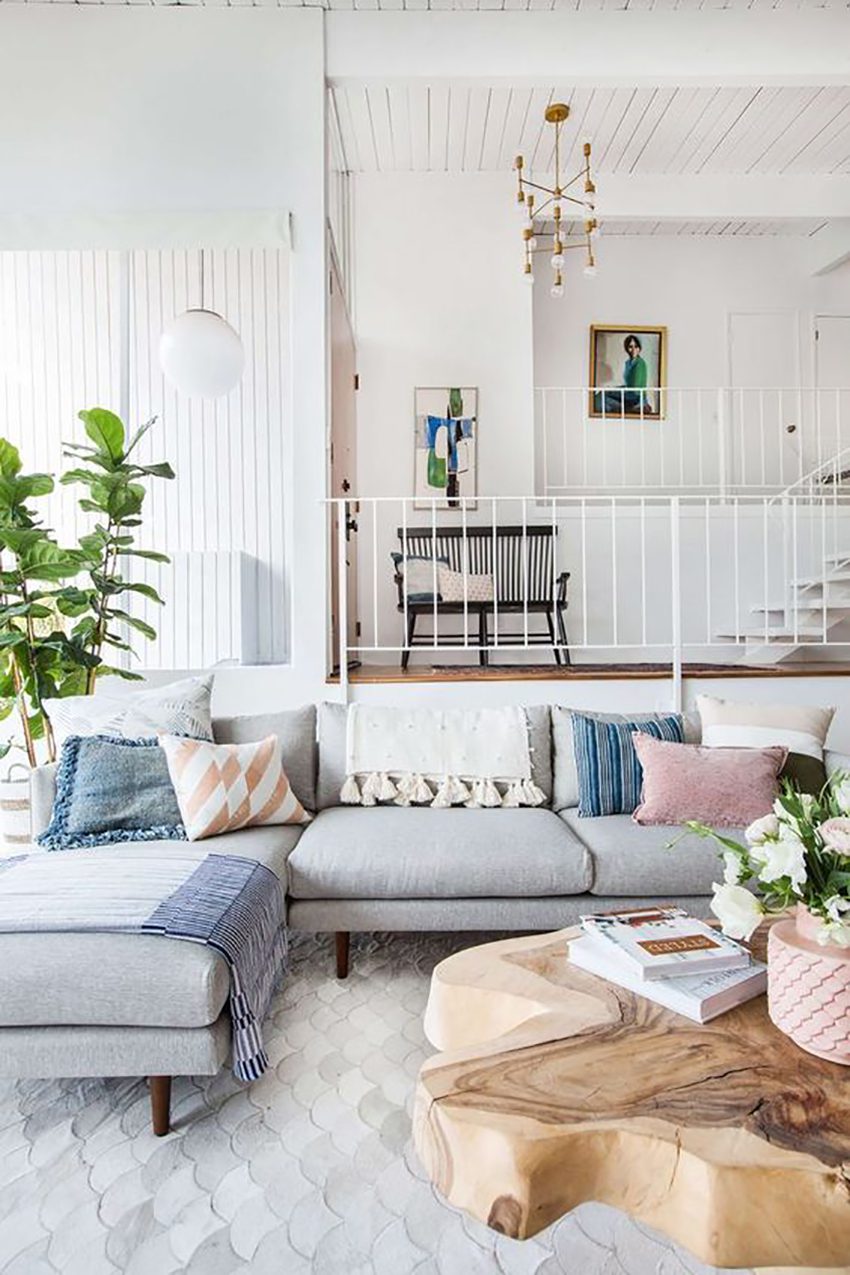The rubber plant has won my heart. It's becoming my favourite indoor plant. It's better than the fiddle leaf if you ask me! Big call I know, but look at those leaves! They are thicker, more defined in shape and the colour is stunning. The leaves don't droop or become tattered like a fiddle leaf …
The rubber plant has won my heart. It’s becoming my favourite indoor plant. It’s better than the fiddle leaf if you ask me! Big call I know, but look at those leaves! They are thicker, more defined in shape and the colour is stunning. The leaves don’t droop or become tattered like a fiddle leaf fig.
The rubber plant grows in much the same way as a fiddle leaf. I’ve got some tips below…


How to grow a healthy rubber plant
Light – Bright indirect sunlight near a window. Morning sun is preferable. If you have it near afternoon sun, then move it back from the window. If the plant starts stretching out and the lower leaves drop, then your plant needs more light.
Water – During the summer it needs the most water and likes to be fertilised. During the winter, your plant needs much less water (sometimes needing water as little as once every 4-6 weeks). Just make sure that your plant is in well-draining soil, as well as in a well-draining pot. They do not like sitting in water. Here’s a rule of thumb for your watering – if the leaves turn yellow or brown and fall off, then it is getting too much water. If the leaves are drooping, but don’t fall off, then your plant needs more water. I ALWAYS use this water meter for all of my plants. You don’t have to worry about when to water when you use this.
How to water – All plants (when dry) need a good soak through. When you’ve let your plant dry out, then water will rush through it. That’s probably NOT enough water. So, I take plants outside and put them on the grass and water it through once, come back and water again 1-2 more times over about half an hour. That’s to make sure it got really wet. OR fill up your sink – I prefer this way. Put the plug in your sink and fill with about 5cm of water. Water the plant through a couple of times and let the plant sit in that water for about half an hour. If you think it still looks a bit dry (because remember water can rush through easily!), then water it again.
Fertilise – I use Charlie Carp from Bunnings (which is organic). I add this to my plant watering every couple of months. I water in the sink for this one. Because the fertiliser will probably rushed through the plant, I let it sit in the leftover fertiliser and get a cup and scoop the water back on to my plant a few times.
Drain it – Let your rubber plant drain really well. Don’t put it back with a really wet bottom because it’ll get root rot. I let the plant drain for a couple of hours, then sit it on a tea towel to make sure the bottom is not dripping or really wet. I mostly leave my plants in the black plastic pot it came in because they have really good drainage holes. Otherwise, drill a few extras in to the bottom of the pot you have (drainage is important!).

Polish up the leaves from time to time (I’m just about to do that to this rubber plant!) and make sure you turn the pot often so it can grow towards the light evenly.
You might also like this post on 6 common houseplant problems AND How to polish the leaves on your indoor plant.
♥ KC.

Be the first to read my stories
Get Inspired by the World of Interior Design
Thank you for subscribing to the newsletter.
Oops. Something went wrong. Please try again later.






